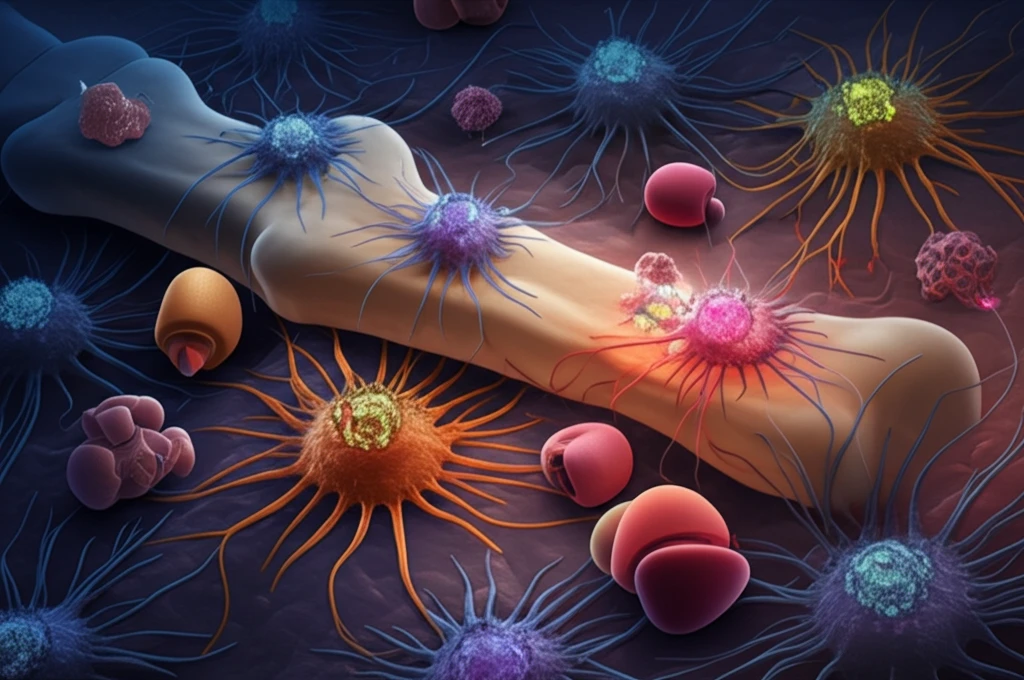
Osteosarcoma: Decoding the Immune Environment & New Treatment Horizons
"A guide to understanding the role of immune cells in osteosarcoma and the latest breakthroughs in immunotherapy. Harnessing the immune system to fight bone cancer."
Osteosarcoma, a type of bone cancer, has long been a challenging disease to treat. While conventional therapies like chemotherapy and surgery have made progress, the cancer's ability to adapt and resist treatment has driven researchers to explore new avenues. One of the most promising areas of focus is the intricate interplay between the immune system and osteosarcoma cells.
The environment surrounding a tumor, known as the microenvironment, significantly impacts how the cancer grows and responds to treatment. This microenvironment includes various cells, signaling molecules, and structural components. Among the key players are immune cells, which can either help fight the cancer or, surprisingly, support its growth.
This article will delve into the complex world of the osteosarcoma microenvironment, with a special emphasis on the roles of different immune cells like lymphocytes and macrophages. We'll also explore the exciting new developments in immunotherapy, which aims to harness the power of the immune system to target and destroy osteosarcoma cells, offering hope for more effective and less toxic treatments.
The Immune System's Dual Role in Osteosarcoma: Friend or Foe?

The immune system is designed to protect the body from foreign invaders, including cancer cells. However, in the case of osteosarcoma, the relationship is far more complex. The tumor microenvironment can influence immune cells, turning them from cancer fighters into accomplices.
- Tumor-Infiltrating Lymphocytes (TILs): These are immune cells that have migrated into the tumor. TILs can include various types of T cells, some of which are capable of directly killing cancer cells. However, osteosarcoma cells can create a suppressive environment that inhibits the activity of these T cells, preventing them from effectively attacking the tumor.
- Tumor-Associated Macrophages (TAMs): Macrophages are versatile immune cells that can play different roles depending on the signals they receive. In the osteosarcoma microenvironment, macrophages can be polarized into two main types: M1 macrophages, which are generally anti-tumor, and M2 macrophages, which tend to support tumor growth by promoting blood vessel formation (angiogenesis) and suppressing the immune response.
The Future of Osteosarcoma Treatment: Harnessing the Immune System
Immunotherapy holds great promise for improving outcomes in osteosarcoma. By understanding how the tumor microenvironment manipulates the immune system, researchers are developing strategies to re-educate immune cells and unleash their cancer-fighting potential. This includes approaches such as activating specific T cells to target osteosarcoma cells, blocking signals that suppress the immune response, and modifying macrophages to promote their anti-tumor activity. Combining these immunotherapeutic approaches with conventional treatments could lead to more effective and less toxic therapies for osteosarcoma, offering new hope for patients and their families.
